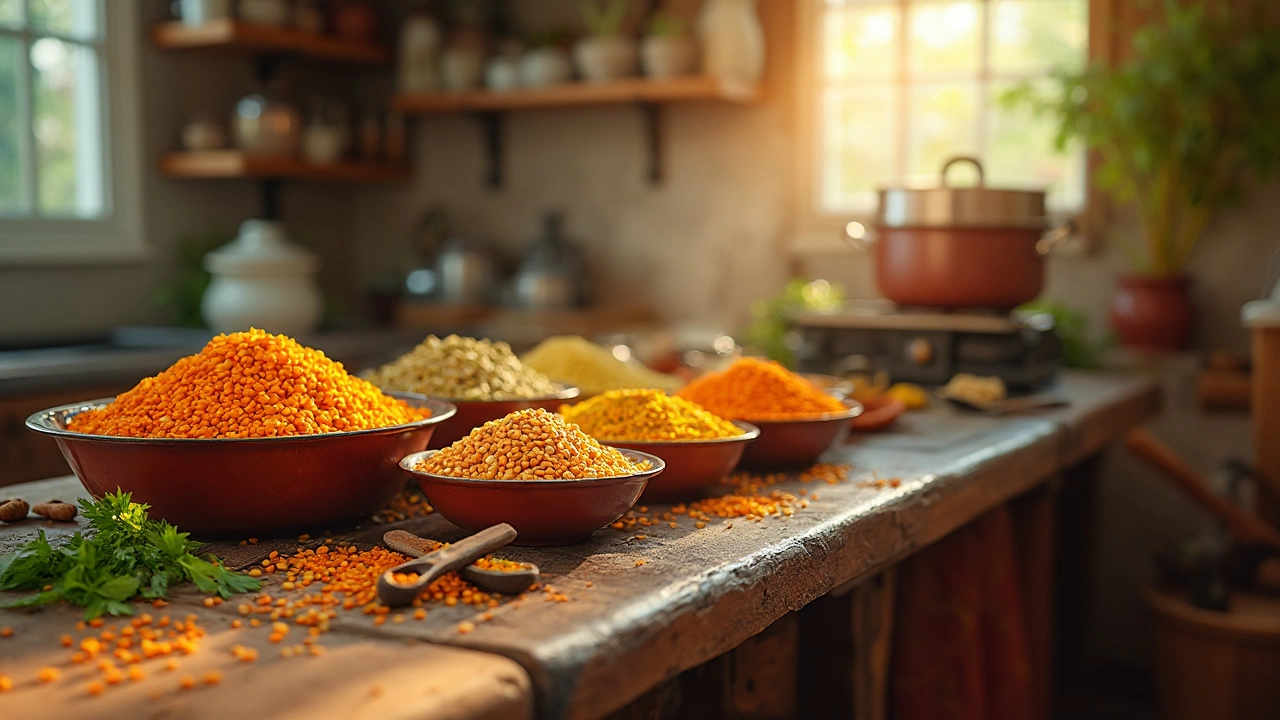Inflammation in Indian Cooking: What You Need to Know
When talking about inflammation, the body's response to irritation, injury, or harmful substances. Also called swelling, it can be chronic if diet keeps sending alarm signals. One powerful ally against it is turmeric, a bright yellow spice rich in curcumin that blocks inflammatory pathways. On the flip side, sugar, refined sweeteners that spike blood glucose and trigger inflammatory hormones often hides in everyday Indian treats. Finally, a healthy gut microbiome, the community of bacteria in your intestines that regulates immune response can either calm or fuel the fire, depending on what you feed it.
Spices That Cool the Fire
Indian kitchens are stocked with anti‑inflammatory players. Besides turmeric, ginger, garlic, and black pepper all contain compounds that inhibit NF‑kB, a key driver of chronic inflammation. When you add lemon to biryani (see our guide on why lemon works), the citric acid not only brightens flavor but also helps the body absorb these spice compounds better. Likewise, coconut milk in creamy curries provides medium‑chain fatty acids that support a balanced gut environment, reducing the chance of inflammation‑triggering dysbiosis.
Many readers ask if you can skip turmeric altogether. Our "curry without turmeric" article explains how you can substitute with mustard seeds or fenugreek, but the curcumin boost is hard to match. If you love biryani, consider swapping fried onions for caramelized shallots—still sweet, but with lower glycemic impact, which keeps sugar‑driven inflammation in check.
Even the way you bake roti matters. Adding a pinch of baking soda can make the dough softer, but over‑using it may increase alkalinity, affecting digestion and gut health. Our tips on oil timing in roti dough and baking powder usage help you strike the right balance, so your flatbreads stay light without upsetting the microbiome.
When it comes to chutneys, temperature changes flavor and bioavailability of antioxidants. Serving chutney cold preserves the crunch of fresh herbs, while a warm mustard chutney releases volatile oils that can soothe a irritated gut. This nuance is covered in our "hot or cold chutney" piece, and it ties directly to inflammation management.
But not every Indian favorite is friendly to your joints. Our "most unhealthy food in India" roundup highlights deep‑fried snacks and sugary desserts that spike insulin and promote inflammatory markers. Swapping those for fruit‑based desserts—think mango with a dash of chaat masala—keeps the sweet craving satisfied while delivering antioxidants like vitamin C and polyphenols.
Speaking of antioxidants, the "healthiest fruit" article details options like guava, papaya, and berries that pack more anti‑inflammatory power than a plate of fried samosas. Pair those fruits with a squeeze of lemon (again, the brightening acid) for maximum nutrient absorption.
Protein sources matter too. Paneer versus tofu comparisons show that paneer made from low‑fat milk delivers calcium without excessive saturated fat, while tofu brings soy isoflavones that can modulate inflammation. Choosing the right protein helps you stay full without overloading on inflammatory fats.
Legumes like dal are a staple, but how you prepare them changes their effect on inflammation. Soaking dal reduces anti‑nutrients, making the protein more digestible and less likely to cause gut irritation. Our "what happens if you don't soak dal" guide explains why a short soak can keep your gut happier—and your inflammation lower.
Finally, remember that sugar isn't just in desserts. Hidden sugars lurk in sauces, ketchup, and even some ready‑made curries. Our deep dive into sugar consumption across ethnic groups reveals that high sugar intake correlates with higher inflammatory markers. Cutting back on added sugar, even in savory dishes, can make a measurable difference.
All these tips come together to form a practical roadmap: use anti‑inflammatory spices, balance blood sugar, protect your gut, and choose whole, fresh ingredients. Below you’ll find a curated list of articles that dive deeper into each of these areas, from the science behind lemon in biryani to the nutrition facts of dal, giving you actionable steps to keep your meals delicious and your body calmer.

Discover the Top Food to Combat Inflammation: A Simple Dal Recipe
Inflammation can be a pesky problem, but foods like dal are here to help. Dal, packed with anti-inflammatory goodness, is a staple in many kitchens for a good reason. Discover why it's a superhero in fighting inflammation and how you can easily whip up a delicious dal dish at home. This article also shares cool tips and facts about incorporating dal into your diet to keep inflammation in check.